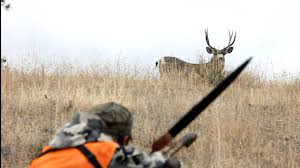
(UNDATED) – During deer season, DNR encourages hunters to stay informed about deer disease and best practices for handling any carcass or other raw meat.
Deer archery season runs Oct. 1 through Jan. 5, 2020.
Epizootic hemorrhagic disease (EHD) has been confirmed in several central and southern Indiana counties. As a result of the outbreak, county bonus antlerless quotas were reduced to a maximum of two in areas affected by EHD. EHD does not affect humans, and deer infected with EHD is safe to consume. Learn more about EHD.
Bovine tuberculosis (bTB) is a bacterial disease that can affect cattle, deer, other mammals and humans. It is not believed to be established in Indiana’s wild deer herd. If hunters find white or tan lesions on harvested deer’s organs or the inner wall of the chest cavity, they should contact an Indiana State Board of Animal Health (BOAH) veterinarian by calling 877-747-3038 or visit boah.IN.gov/2396.htm.
Chronic wasting disease (CWD) has not been detected in deer tested from Indiana. CWD is found in free-ranging white-tailed deer in states close to Indiana, including Michigan, Illinois, and Wisconsin.
To learn more about CWD and CWD surveillance, visit on.IN.gov/CWD.
Regardless of the harvest, hunters and trappers should adhere to the following best practices when field-dressing or handling any carcass or other raw meat:
1. Wear disposable gloves
2. Always wash your hands afterward
3. Clean and disinfect instruments after use
4. Don’t handle or consume wild animals that appear sick or act abnormal
5. Cook meat thoroughly
6. Minimize contact with brain or spinal tissues



